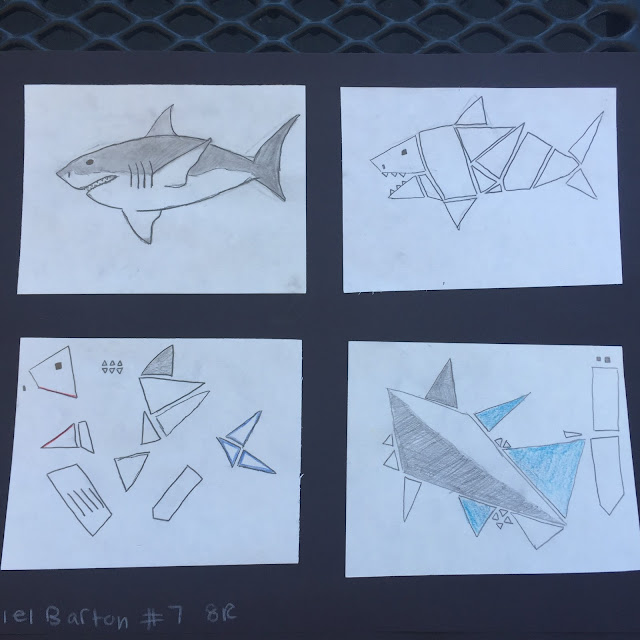Students just finished a project that looked at the artworks of Roy Lichtenstein, Pablo Picasso, and Theo van Doesberg to see how the artists went from representational to abstract to non-objective in their works of art, while focusing on the same subject matter.
We discussed the vocabulary of representational, abstract, and non-objective and then students had to come up with their own subject matter that they would turn into a series of artworks like the artists we studied.
Below are the instructions the students had to follow:
 |
| The Cow: 4 Stages of Abstraction, Theo van Doesberg, 1917 |
 |
| Bull V, Roy Lichtenstein, 1973 |
Square #1: Realistic:
-Full-image animal drawing
-Side-view
-Realistic with shading details
-Animal must have interesting features (if the animal was in silhouette, you should be able to tell what animal it is)
Square #2: Simplistic:
-Animal must be drawn in simplified shapes and lines
-The viewer should still be able to tell what animal it is without much thought
Two questions to ask tablemates:
-Can you tell what animal this is?
-Can I take anything away from my drawing and you would still know what animal it is?
Square #3: Deconstructed Color Blocks:
-Animal is further deconstructed
-The viewer should not be able to tell what it is, until you tell them (then they should be able to piece it together).
-The addition of color: find significant colors that define certain animal characteristics
Square #4: Non-objective Depiction of Animal:
-Even with explanation, the animal is not discernible. It should have qualities of the past square and color themes and shape themes but even with explanation, the viewer will not see the animal.
Finished artworks:







No comments:
Post a Comment